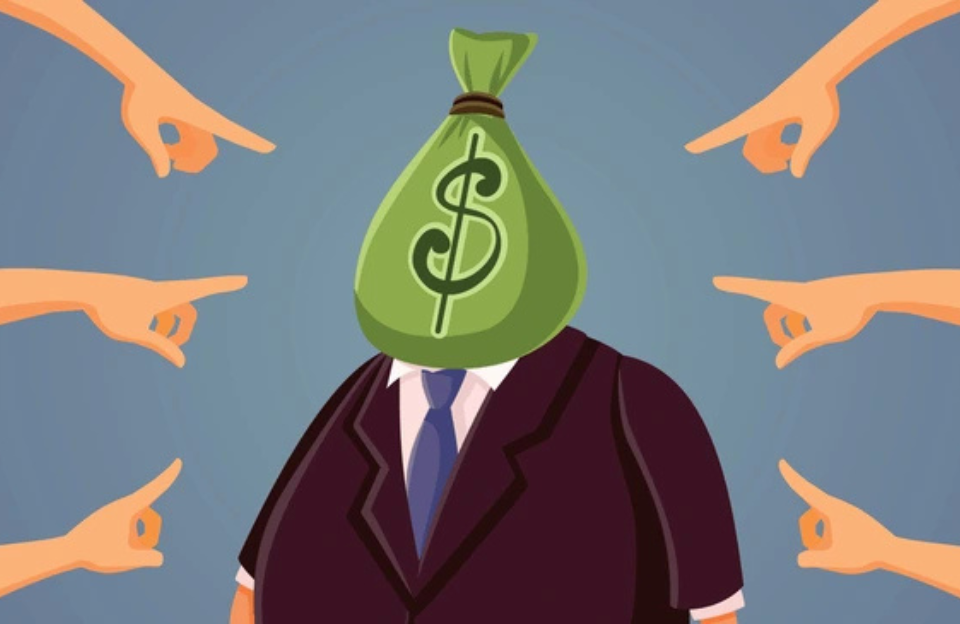In yesterday’s article, we revealed the hidden truth behind every self-made fortune — innovation is the secret engine that powers millionaire success.
But understanding the why isn’t enough.
Today, we’ll break down the “how” the exact blueprint millionaires use to turn simple ideas into scalable empires. “The Millionaire Innovation Blueprint”
Contrary to popular belief, innovation isn’t random. It’s not about being a genius or waiting for “aha moments.” It’s a systematic process, a repeatable thinking pattern that converts curiosity into cashflow.
Whether it’s Elon Musk reimagining transportation, Oprah Winfrey reinventing media, or Sara Blakely transforming shapewear, every modern millionaire uses a structured formula.
💬 Innovation is not a talent. It’s a discipline ~ one that you can learn, master, and monetize.
Let’s decode that discipline today.
Step 1: Reframe Problems Into Profitable Opportunities
At the heart of every great innovation lies a simple shift in perspective.
The average person sees a problem and complains.
A millionaire sees a problem and builds a business around solving it.
That’s the first mindset shift ~ reframing.
“The bigger the problem you solve, the bigger the paycheck you receive.”
Case Study: Sara Blakely – From Frustration to Fortune
Sara Blakely didn’t invent shapewear because she was a fashion designer. She was a frustrated customer who couldn’t find the perfect undergarment. Instead of accepting it, she reframed her frustration into an opportunity and built Spanx, a billion-dollar company.
She didn’t ask “Why does no one fix this?”
She asked, “How can I fix this?”
That’s millionaire innovation.
Your Action Plan:
- Make a list of 5 frustrations you encounter daily.
- Ask: “If I solved this for myself, who else would benefit?”
- Rank them by market size and urgency.
That’s your opportunity matrix.
Step 2: Observe Patterns Others Ignore
Every industry has patterns ~ behaviors, inefficiencies, emerging trends. Millionaires are pattern detectives.
They spot opportunities before they become mainstream.
“Innovation begins with observation.”
Real Example: Netflix’s Pattern Recognition
In the late 1990s, Reed Hastings noticed two emerging patterns:
- People hated late fees (Blockbuster’s biggest flaw).
- The internet was enabling home delivery.
By combining those insights, he created Netflix — a company that would later disrupt its own DVD model with streaming.
He didn’t guess. He observed.
Data Snapshot:
According to McKinsey, companies that prioritize trend spotting grow revenue 2.5x faster than those that don’t.
💡 Your Action Plan:
- Follow industry reports (e.g., CB Insights, TrendWatching).
- Study what frustrates customers in top Amazon or Reddit reviews.
- Track where consumer attention is shifting (TikTok, AI tools, new platforms).
Patterns = profit.

Step 3: Adopt the MVP (Minimum Viable Prototype) Mindset
Millionaire innovators don’t wait for perfection, they launch imperfectly, learn quickly, and improve constantly.
The goal isn’t to get it right the first time; it’s to get real data fast.
“Done is better than perfect — because perfect never launches.”
Real Example: Airbnb’s Humble Beginnings
Airbnb started with three air mattresses and a simple website to test one question: Will strangers pay to stay in someone else’s home?
The first launch wasn’t scalable. It wasn’t pretty. But it gave them proof of demand.
That’s the power of the MVP.
Your Action Plan:
- Turn your idea into a 1-page website or landing page.
- Collect emails or pre-orders to validate demand.
- Iterate based on real feedback, not assumptions.
Perfection kills progress. Launch fast, fail forward.
Step 4: Build Systems, Not Just Solutions
True wealth doesn’t come from one-time wins, it comes from systems that scale.
Millionaire innovators don’t just create products.
They create repeatable frameworks that generate predictable results.
“A system is an idea that works without you.”
Example: McDonald’s
McDonald’s didn’t innovate burgers — it innovated the assembly-line restaurant system.
Anyone could run it. That’s why they scaled globally.
Why Systems Matter
- They free your time.
- They multiply revenue.
- They build brand consistency.
Millionaires automate and delegate what average people micromanage.
Your Action Plan:
- Identify tasks you repeat often.
- Document them step-by-step.
- Automate with tools (Zapier, Notion, Airtable) or delegate to a VA.
Every process you systemize is one step closer to freedom.
Step 5: Fail Fast, Learn Faster
Millionaires don’t fear failure — they embrace it as feedback.
Each mistake is data.
Each setback is a prototype.
“Failure is tuition for the school of success.”
Example: James Dyson
Dyson built 5,126 prototypes before perfecting his vacuum cleaner.
Each “failure” was a data point, not a dead end.
Today, Dyson’s net worth exceeds $20 billion.
Your Action Plan:
- Create a “Failure Log.” Write lessons from every setback.
- Review monthly. Look for recurring patterns.
- Reward yourself for experiments, not just outcomes.
The faster you fail, the faster you learn. The faster you learn, the faster you win.
Step 6: Surround Yourself With Future Thinkers
Millionaire Innovation Blueprint thrives in high-energy ecosystems.
Millionaires build circles of curiosity — thinkers, doers, and disruptors.
“If you’re the smartest in the room, you’re in the wrong room.”
Real Example: PayPal Mafia
A group of innovators (Elon Musk, Peter Thiel, Reid Hoffman) who co-founded PayPal went on to build Tesla, SpaceX, LinkedIn, YouTube, and Palantir.
Their shared ecosystem multiplied their individual success.
Your Action Plan:
- Join startup communities (Indie Hackers, Y Combinator forums).
- Attend innovation meetups or mastermind groups.
- Build a “circle of five” ~ mentors, peers, and thinkers who challenge you.
Your network shapes your net worth ~ and your innovation quotient
Step 7: Monetize Momentum
Innovation without monetization is art.
Millionaire innovation is applied creativity with a business model.
“If it doesn’t make dollars, it doesn’t make sense.”
Example: Canva’s Business Model
Melanie Perkins didn’t just create a design tool.
She innovated a freemium model — attract users free, convert power users to paid plans.
Today, Canva is valued at over $25 billion.
Your Action Plan:
- Identify 3 ways to profit from your idea:
- Product sales
- Subscriptions
- Licensing or royalties
- Choose one and test pricing early.
Innovation pays when value meets strategy.
The Millionaire Innovation Loop
Here’s the full Millionaire Innovation Blueprint framework to memorize 👇
Observe → Reframe → Build → Systemize → Iterate → Connect → Monetize → Repeat
It’s a cycle, not a one-time event.
Each loop increases your clarity, speed, and revenue.
This is how self-made innovators build wealth in any economy.
Bonus: The 4 Levels of Innovation
To advance your journey, know where you are 👇
| Level | Description | Example |
|---|---|---|
| 1️⃣ Imitation | Copying existing ideas | Selling trending products |
| 2️⃣ Improvement | Making things better | Faster delivery, better UX |
| 3️⃣ Integration | Combining ideas | Netflix = DVDs + Streaming |
| 4️⃣ Invention | Creating from scratch | iPhone, Tesla, ChatGPT |
Start where you are — but aim for Integration and Invention.
FAQ: Millionaire Innovation Blueprint
Q1: Can I innovate without money?
Yes. Most great innovations started with limited funds. Use creativity, lean tools (Canva, Notion, AI), and validate before investing heavily.
Q2: What if I’m not a tech person?
Innovation is not limited to tech. You can innovate in fashion, education, content, real estate, health, or finance ~ anywhere people have unmet needs.
Q3: How long does innovation take?
Depends on execution speed. The average startup validates ideas in 3-6 months. The key is testing, not guessing.
Q4: Should I quit my job to innovate?
No. Start part-time. Use your job to fund your experiments. Once your innovation generates consistent traction or income, transition.
Q5: What if my idea already exists?
Perfect. That means there’s demand. Just innovate differentiation — better price, experience, delivery, or niche.
Q6: What tools help me innovate faster?
- Idea validation: Typeform, Google Trends
- MVP building: Carrd, Glide, Bubble
- Automation: Zapier, Airtable
- Collaboration: Slack, Notion
Q7: How do I stay inspired daily?
Read success stories (like here on MillionaireScript “The Millionaire Innovation Blueprint” hub ), track trends weekly, and talk to customers. Innovation grows where curiosity lives.
Final Thoughts: Innovation Is a Muscle
You don’t have to be a genius to innovate.
You just have to train your innovation muscle daily.
Ask better questions.
Observe the world.
Test bold ideas.
Build small, iterate fast, and monetize momentum.
That’s how you turn thought into wealth.
💬 The world doesn’t pay you for what you know. It pays you for what you innovate.
Welcome to the Millionaire Innovation Era. “The Millionaire Innovation Blueprint”



